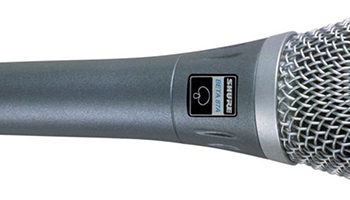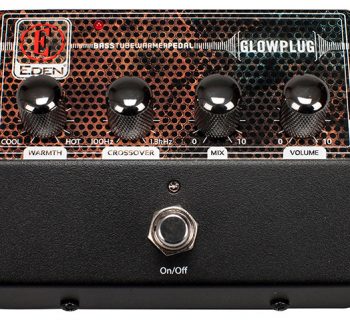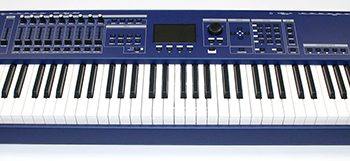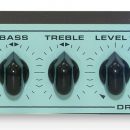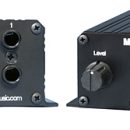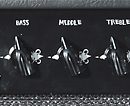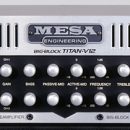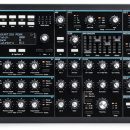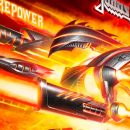 Back in the late ‘70s and early ‘80s, Ned Steinberger made a name for himself with the revolutionary headless bass guitars that bore his name (and eventually, headless guitars, too). Made from carbon fiber and featuring a headless (and almost bodyless) design, the exceptional instruments were played by a who's who of legendary musicians—and still are today.
Back in the late ‘70s and early ‘80s, Ned Steinberger made a name for himself with the revolutionary headless bass guitars that bore his name (and eventually, headless guitars, too). Made from carbon fiber and featuring a headless (and almost bodyless) design, the exceptional instruments were played by a who's who of legendary musicians—and still are today.
At the end of the decade, Steinberger sold the company to Gibson, and today, the company bearing his name still manufactures a variety of headless instruments, though Ned is no longer involved. Since the '90s, however, Ned Steinberger has been building remarkable instruments under the name of his subsequent company, aptly named NS Design. Here, Ned's focus has primarily been the design and building of exceptional, modern electric-acoustic classical instruments such as bass and double bass, cello, viola, and violin. After years of perfecting not only modern playability, but also the use of Piezo transducers (pickups) to amplify those acoustic instruments, Ned turned his attention back to the design of a new, headless, electric bass guitar.
The result of Ned's effort, the Radius bass guitar, is astounding to say the least. Unlike the near bodiless design of his classic instrument, the Radius four- and five-string bass guitars are more traditional solidbody designs, but with a contemporary aesthetic that is comfortable and familiar, yet slightly modern. Improving upon his classic instrument in every way, the Radius CR5 we tested has outstanding playability with sumptuous comfort and beautiful, varied tone. It is an exceptional instrument with boutique build quality, pristine tone, and modern appointments.
Features
“A gorgeous work of art” might be one way to describe the NS Design Radius when you first remove it from the custom-shaped gig bag, especially when coated in the Amber Satin finish of our review instrument. We couldn’t help but be impressed by the workmanship, fit, and finish of our review instrument, the five-string CR5 (a four-string version, the CR-4, is also available). Featuring a flamed maple top mated to a solid maple body, and with a beautiful edge binding between the top and back, the bass has classic beauty, yet the body shape has subtle, modern styling.
The name Radius is indeed fitting, as everything about this bass is sculpted and curved. The body itself has a soft curvature not only on top, but the rear of the instrument is slightly concave as well (to provide more contact with your body according to NS Design).
The one-piece maple neck has an embedded carbon fiber core as well as an adjustable truss rod, a 15” radius, and 35” scale length. You really notice the curvature of the fretboard, and it seems logical that the last twenty-plus years of building electric-acoustic upright basses, cellos, and violins had something to do with the new instrument's inspired fretboard design. The nut is 1.85" wide, and the fretboard is 2.54" wide at the 12th fret.
The whole radius concept carries over to the pickup system, too. The custom EMG humbuckers are curved to match the radius of the neck, and they are powered by an 18V onboard preamp. The pickups were designed to work in conjunction with NS Design’s Polar pickup system, which features Piezo acoustic pickups underneath the string saddles. Controls include volume, low and high frequency boost/cut knobs, and balance between the magnetic and Piezo pickups. One three-position switch toggles between magnetic pickup selection: bridge only, bridge plus neck, and neck only. The other switch changes the voicing of the Polar Piezo output. This all adds up to an extremely diverse range of tones that can be dialed in.
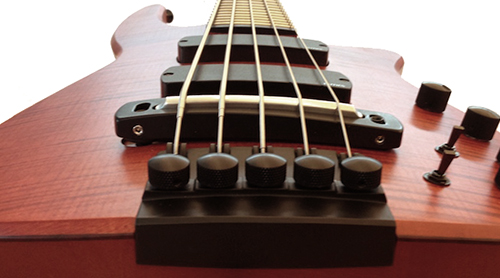
Ned Steinberger pioneered the design of headless instruments, and he carries on that heritage in the Radius bass guitars. You can use any traditional electric bass guitar string—no special strings with two sets of balls are required, but yes, you are required to laugh at that remark. The design is no laughing matter, though, as it’s a work of mechanical engineering excellence. The bridge is self-clamping, so all you do to change strings is loosen the tuning wheel at the bridge, drop a string in with the ball end at the top of the neck where your headstock used to be, and pass the other end of the string through the bridge, which routes it straight back to the rear of the body. Turn the thumb wheel and it clamps down on the string and tunes to pitch. Just clip the excess string length from the rear and you’re set.
At 8.6 pounds, the Radius CR5 won’t break your back. Also available are the CR-4 four-string bass, and each model can be purchased as a fretless instrument, too.
Usability
Ned Steinberger’s reputation for excellently craftsmanship and innovative design is widely known, and he upholds that reputation with the Radius CR5 bass. The contour of the fingerboard, top, and back would make Antonio Stradivari proud. We loved the curved design of the body, fingerboard and the pickups, as this symmetry is very similar to that of fine double basses used by symphony bassists. But have no fear, rockers. The radiused design is subtle enough that you’ll feel immediately comfortable playing this bass.
The Radius CR5 was set up perfectly right out of the box, with action and intonation both spot on. The hand-polished finish was flawless—we could not find so much as a micron-sized bump or divot in the neck—and it gave the CR5 a silky smooth feel across the instrument’s neck and body.
The overall feel of the neck and fingerboard was fast and comfortable. The Radius CR5 neck feels slightly narrow when compared to many other five-string basses, striking a great balance between having enough string spacing for adequate play yet being narrow enough that a four-string player will be able to easily embrace the additional string. Finger picking, using a pick, and laying down funk- and slap-style play, were equally comfortable with the CR5.
The controls were logically placed and easy to reach while playing. Once we familiarized ourselves with the function of the knobs and switches, their placement made further visits to the documentation unnecessary. The smooth movement of the controls made settings precise, and center detents were logically placed in the controls that warranted them (like EQ controls that either boost or cut depending on which side of center you turn them). We found it extremely useful that besides the standard tone and blend controls there was also a mini, three-way toggle switch for the Piezo Polar pickup system, which facilitated quick tone changes even while playing.
Our only debate—and a minor one—centered on whether or not the magnetic pickup selector should have been a mini-toggle like the Piezo pickup’s tone selection (as it is), or a traditional three-way blade switch. We suspect the NS Design team didn't care for the idea of cutting a "slice" into the gorgeous flamed top, and typically, bassists don’t flip around from pickup to pickup within a song like guitarists tend to do.
Battery access was just a simple thumb-screw away.
Sound
The sound and tone of the NS Design CR5 is nothing short of gorgeous, and the custom EMG pickups were both clean and precise. We set the tone and pickup balance controls in the center (neutral) positions and even before we dialed things in to taste, the sound was very clear, and packed a nice punch.
We like the flexibility of using the EMGs or the Piezo independently as well as in combination. The two pickup systems in combination create a near infinite number of different tones that range from electric bass to acoustic bass to almost guitar-like when the EQ is dialed in at some extreme settings.
We have to focus on the Piezo Polar Pickup System, though, which adds such a great range of tone options when blended with the EMG pickups, but is pretty spectacular on its own. The Piezo system has a three-way toggle switch that selects among three different preset EQ settings (Hi, Medium, and Low). A very cool detail we discovered in the preamp circuitry of the Radius bass is that the EQ tone knobs affect bass and treble boost/cut for both the Piezo pickup as well as the magnetic pickups.
Using the Piezo Polar Pickup System, it was easy to emulate real acoustic bass tone. With the EQ toggle switch in the Low or Medium position and some slight adjustment of the tone controls (and our finger picking technique), we were able to coax a very realistic double bass sound out of the Radius CR5. When mixed with other live instruments, the acoustic bass tone is verypassible. The only noticeable difference we found was caused by the presence of frets on the fretboard. But aside from that, the Radius would make a wonderful choice of instrument for the jazz and blues musicians hoping to leave the double bass at home. Of course, the fretless version of the CR5 would make this bass even better suited to the acoustic gig.
We played the NS Design CR5 through a few of our favorite bass rigs including a Mesa Boogie Titan V12 and an EBS HD360 each set to basically flat tone settings as tends to be our preference. The Radius CR5 was dynamic in both tone and presence, and we had no issues cutting through drums and guitars in pop and rock band situations. Minimal tone and EQ adjustments were made on the amps to compensate for various room sizes and other acoustic factors, and the sounds we got were fantastic. This bass made it very easy for us to create great sounds in every scenario we approached, and it could easily be your single go-to bass if you've only got the budget for a single premium instrument.
The onboard tone controls were musically useful throughout their full range of boost and cut, and their heft ensured that they stayed in place when set away from the center detents.
We had a lot of fun coming up with a near limitless range of tone and sound variations thanks to the pickup options provided. Eventually, we added some bass effect pedals, and made use of the Radius CR5 while covering a diverse range of songs running the gamut from classic jazz to modern metal. In fact, the only sounds for which this bass is not exceptional is if you need to cop classic '60s or '70s bass tone. You can't get muddy, noisy, single-coil tone out of this instrument. The Radius bass is all about modern, clean, articulate, expressive, and acoustic tone. The Radius CR5 is easily one of the most versatile basses we have ever played.
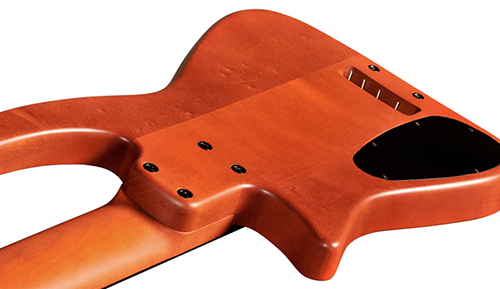
Documentation and Product Support
Imagine our surprise to find this near-boutique instrument includes the best documentation we’ve ever seen for a bass! The printed booklet provides full details regarding functional controls, string changing, adjustments, and instrument maintenance. You can also watch Ned personally demonstrate string changing in a video on the company's website.
Price
The NS Design Radius CR5 (MSRP $3,950) sells for approximately $2,800 and includes a custom-fitted gig bag. This is a good price for a premium, European-manufactured bass, though obviously a bit pricey in U.S. dollars. Fortunately, the CR5 delivers solid value and flawless execution. It’s a special instrument to be sure.
Contact Information
NS Design
www.nedsteinberger.com
Overall Rating - Product Summary
| Category | Value | Rating |
| Features | 20% | |
| Usability | 25% | |
| Sound | 25% | |
| Documentation & Support | 10% | |
| Price | 20% | |
|
|
||
| OVERALL RATING = 3.7, which earns it a WIHO Award!
3.6 stars or better: Outstanding, WIHO Award |
||




